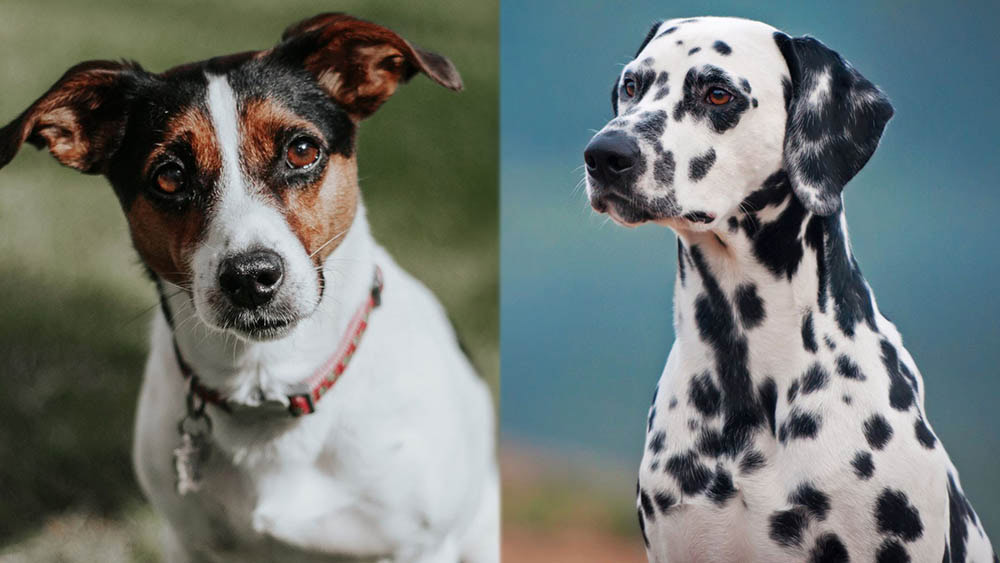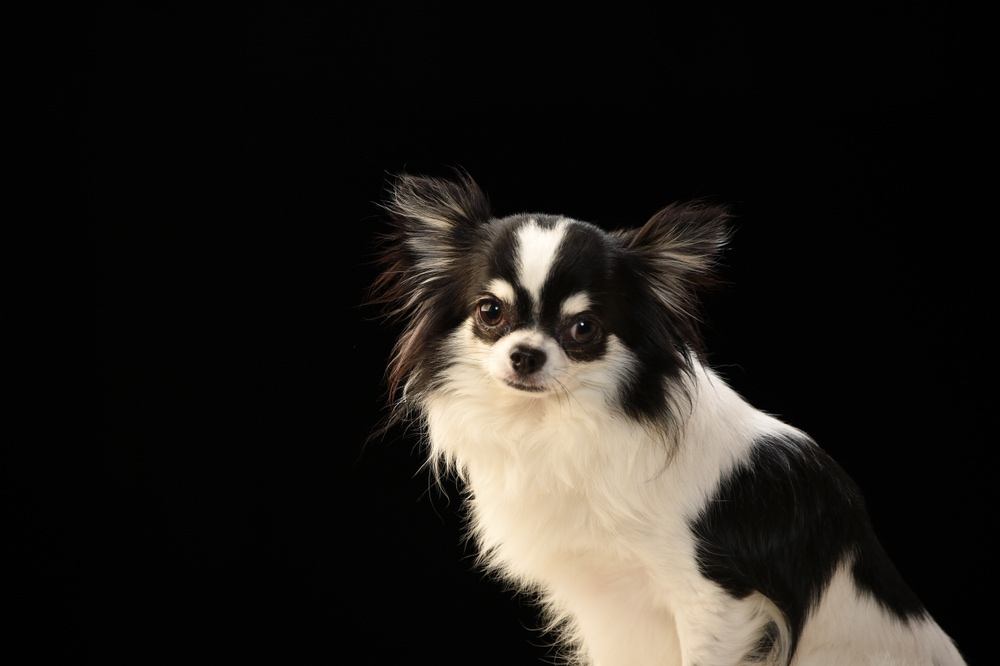Maltese vs Poodle: Which Dog to Choose?

Updated on
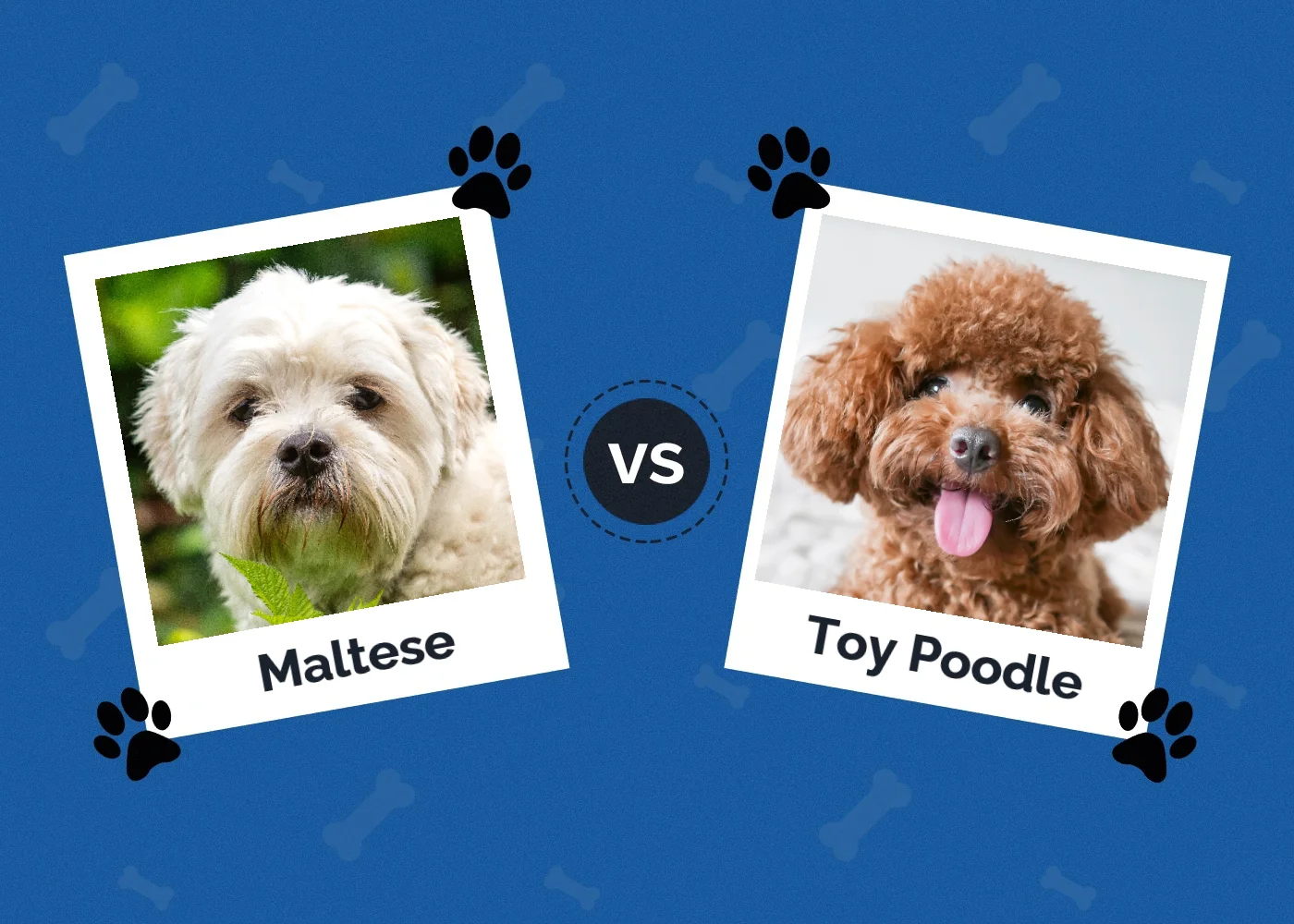
If you’re looking for a regal, intelligent dog with a loving nature in a pint-size, then you’ve most likely narrowed down your search to the Maltese and the Toy Poodle. According to the American Kennel Club, the Poodle currently ranks seventh in breed popularity, with the Maltese ranking 37th out of a total of 195 dog breeds.
To help you decide, we’ve placed the Maltese and the Toy Poodle in head-to-head matchups in various categories. In some cases, both breeds have much in common; in other areas, one breed reigns supreme. Read on to learn more about these magnificent breeds.
Visual Differences
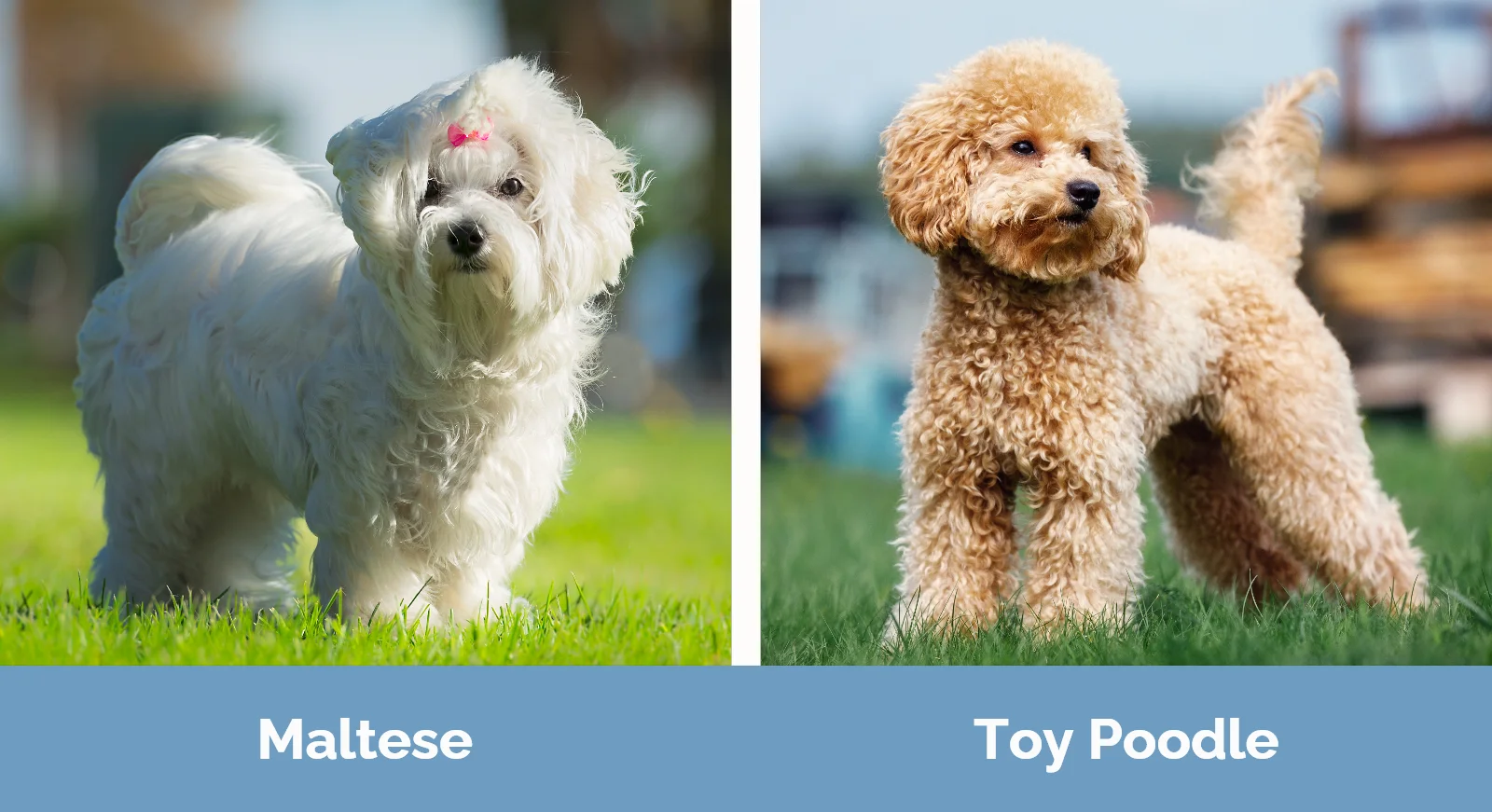
At first impression, these two dog breeds appear to be all show and perhaps better suited for nobility and aristocrats, with their different yet equally impressive coats. However, both the Maltese and the Toy Poodle have much more to offer than fancy fur. These dogs are sweet, eager, smart, and athletic.
A Quick Overview – Maltese vs. Toy Poodle
The Maltese and the Poodle have a lot of similarities, but they do have their set of unique characteristics. Let’s break it down.
- Average Height (adult): 7–9 inches
- Average Weight (adult): 5–7 pounds
- Lifespan: 12–15 years
- Exercise: High-energy
- Grooming needs: Moderate
- Family-friendly: Yes
- Dog-friendly: Sometimes
- Trainability: Somewhat difficult
- Average Height (adult): 8–10 inches
- Average Weight (adult): 4–6 pounds
- Lifespan: 10–18 years
- Exercise: High energy
- Grooming needs: High
- Family-friendly: Yes
- Dog-friendly: Often
- Trainability: Easy
Appearance
Sizing Up the Competition
Maltese and Toy Poodles each weigh about the same and stand at a similar height. Maltese tend to weigh under 7 pounds and reach a shoulder height of between 7 to 9 inches. Poodles come in three varieties: standard, miniature, and toy. Although all three Poodle varieties have the same proportions and build, for equal comparison with the Maltese, we’ll describe only the toy variety of Poodle. In order to be considered a Toy Poodle, the shoulder height must be below 10 inches. Toy Poodles weigh between 4 to 6 pounds.
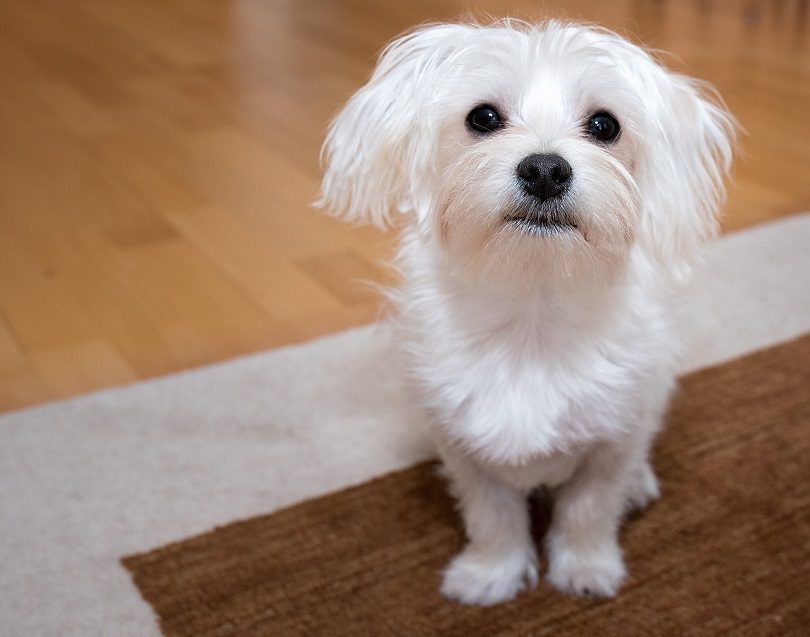
Straight vs. Curly Coats
The most significant difference in appearance between the Maltese and the Poodle is each breed’s differing coats. The Maltese has an eye-catching, long flowing coat that sweeps the floor as they move with their smooth gait, and their head held high. Maltese only come in one color: pure white. Often, the long hair on their head is clipped in a top knot to keep it out of their faces.
Toy Poodles sport curly coats that add volume and interest to their small bodies. Show Poodles display the dramatic Continental Clip with its elaborate puffs of curly fur among fully shaved areas. Most pet owners opt for the practical Sporting Clip, which is a more uniform, shorter cut that outlines their bodies. Poodle coats appear in many colors, including white, cream, apricot, brown, red, black, and silver, and variations of shades in between.
Noble Statures
Both the Maltese and the Toy Poodle have builds and facial features that seem to convey a sense of greatness despite their small size. Maltese may win you over with their charming big, dark eyes, their black, round nose, and their adorable low-set ears. They have a compact body and a tufted tail that sweeps over their backs.
Toy Poodles have a sturdy, muscular body. They hold themselves high and proud. Poodles of all varieties produce an elegant presence. Toy Poodles move with lively, light-footed, agile strides.
History
Both the Maltese and the Poodle share uniquely rich histories. The Maltese can claim the title of the oldest breed between the two dogs. In fact, in the category of Toy breeds, the Maltese is the most ancient. Since this breed dates back to at least 1500 B.C., no one is entirely sure of their origins, which can be traced to the ancient cultures of Greece, Rome, and Egypt. However, it’s generally agreed upon that the Mediterranean island of Malta is where this breed gained its identity and beloved reputation as a favored lapdog.
Despite being the national dog of France, Poodles originated in Germany. They were bred as duck hunters for their superb skill in retrieval and their agile swimming abilities. The name Poodle is derived from the German word, “pudelin” which means to splash in the water. Interestingly, the fancy cut on show Poodles has its origins in the breed’s over 400-year-old history as a water-retrieval dog. The selective clipping actually served a practical purpose. Certain areas were shaved to help the Poodle better navigate the water, while other sections were kept full and long to maintain warmth.

Temperament
Both of these dog breeds offer much to love. While similar in nature, the Maltese and the Toy Poodle differ in areas that you may find significant when deciding between the two breeds.
The Magnanimous Maltese
Maltese make wonderful companions due to their sweet, charming, gentle nature. These affectionate, intelligent dogs love to playfully interact. They have terrific athletic ability that can be fully appreciated on an agility course.
As a pet, Maltese become quite devoted to their owners. Despite their less-than-intimidating stature, Maltese will protect you and your home with an abundance of barking. Maltese require plenty of human interaction and are prone to suffer from separation anxiety. If you’re considering a Maltese as a family dog, keep in mind that this breed is not always tolerant of small or rowdy children and can become snappy.
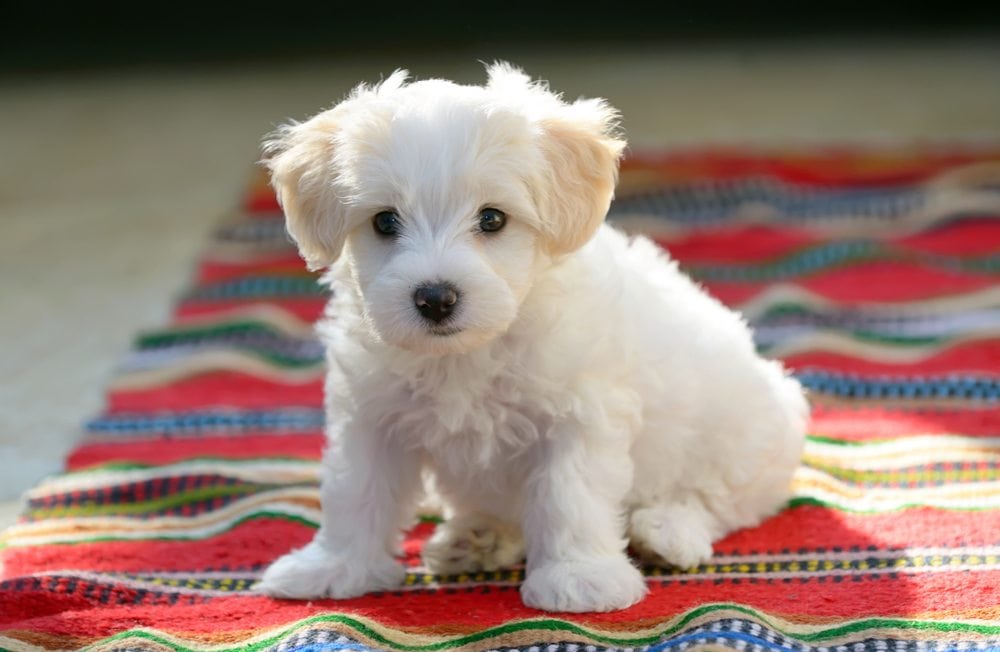
The Pleasant, People-Pleasing Poodle
Poodles gain the upper hand on Maltese with their higher level of intelligence and their overall compatibility as a family dog. While young children should be supervised when handling any Toy breed, including the Toy Poodle, this dog breed is especially tolerant, eager to please, and fun-loving.
Toy Poodles make lovable pets. They’re lively, dynamic, athletic, and so full of personality and smarts that you may wonder if they think that they’re human. Poodles tend to exhibit shyness when they’re unsure of their new owners or strangers. If distressed, they tend to voice their opinion through plentiful barking. Although not as frequently an issue as the Maltese, some Poodles exhibit separation anxiety.
Trainability and Exercising Needs
When it comes to training your new Maltese or Toy Poodle puppy, you may want to know what kind of challenge each breed may present. These two dog breeds differ greatly in the approach that you’ll need to take for training and how much exercise each breed needs.
Tricks for Treats
Unfortunately, the Maltese has a stubborn, willful streak that may require stocking up on extra treats and using creative thinking. Fortunately, the intelligent Maltese responds well to rewards-based training and enjoys learning tricks.
Fun and Positive
Toy Poodles are easily trained due to their extreme intellect. Best of all, Poodles are eager to please you, especially if the training focuses on positive reinforcement and provides a level of fun. Poodles excel at canine sports that demand agility and obedience, such as dock diving and retriever hunt tests.
Getting Physical
If you live in an apartment or a small space without much of an outdoor area, the Maltese is your ideal companion. Maltese only need occasional exercise. In direct contrast, Toy Poodles have high energy levels that demand daily exercise. Toy Poodles are adaptable to apartment living as long as you can offer them time to workout, such as joining you on long walks or jogs. They especially enjoy swimming and any kind of retrieval activity that works their mind, as well as their bodies.
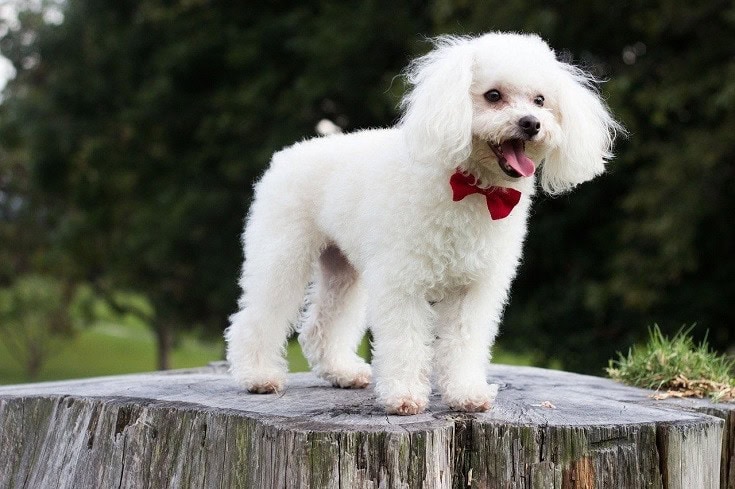
Health
Both the Maltese and the Toy Poodle are generally healthy dogs that encounter only a few health concerns throughout their long lives. Poodles have a slightly longer life expectancy at 10 to 18 years, with Maltese living nearly as long, averaging between 12 and 15 years. Both breeds are predisposed to weight gain. Maltese have a higher rate of dental disease and should have their teeth brushed frequently.
Grooming and Maintenance ✂️
Although their coat textures vary greatly, both Maltese and Toy Poodle coats barely shed, allowing them to be considered to be hypoallergenic.
Grooming a Maltese takes diligence but is a bit less intense than a Poodle. Maltese do not have an undercoat and only require daily gentle brushing and combing to avoid matting and tangles. Regular baths and conditioning their coats will keep a Maltese looking their best.
Poodles need to be carefully brushed daily to prevent mats at the roots. If a Poodle’s coat is left natural, it will cord. Most Poodle owners opt for shorter cuts to help with grooming maintenance.
Final Thoughts
While both dog breeds have much in common, there are a few characteristics that set them apart. Maltese have beautiful, flowing locks of white hair. This ancient dog is wonderfully devoted to their owners, requires minimal exercise, and has adorable facial features. The Toy Poodle is a highly intelligent, elegant-looking, athletic dog that lives to please their owners. You’ll need to offer your Toy Poodle plenty of exercise, but they’re far easier to train than the Maltese.
Hopefully, after reading through each category and comparing the Maltese to the Toy Poodle, you’ve found a dog breed that’s right for you. Both dog breeds make wonderful, lively companions. You really can’t go wrong with either choice.
See Also:
- Portuguese Water Dog vs. Poodle: What’s the Difference?
- Maltese vs Bichon Frise: Key Differences & Similarities
Featured Image Credit: Left – David Atkins, Pexels | Right – Lim Tiaw Leong, Shutterstock



